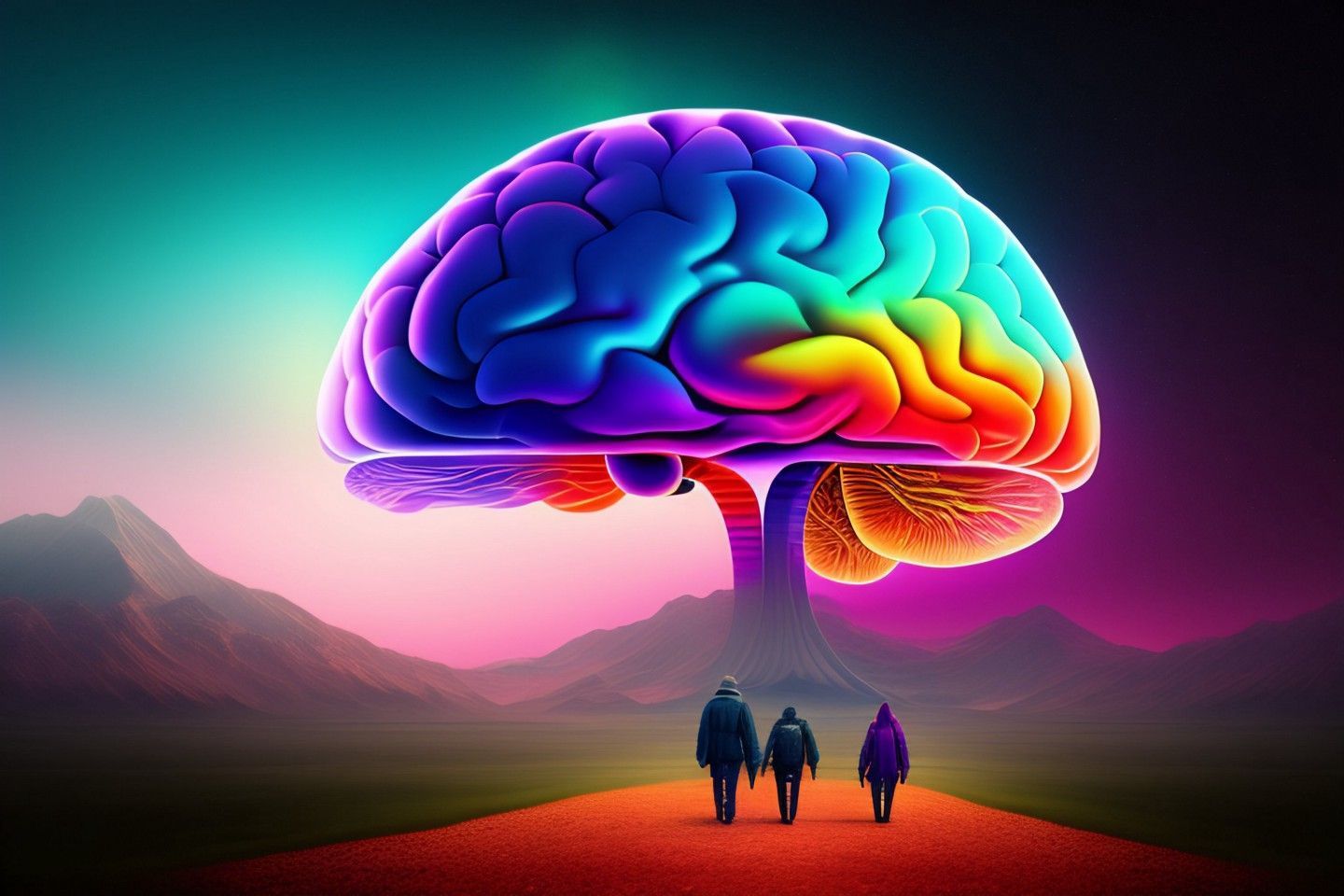Daily Walks: Not Boring. Not a Waste of Time.
In fact, it’s the best thing you can do for your sleep, creativity & stress levels.

The science is clear:
A simple, brisk walk is the most underrated, corrective, mind-body, fat-burning exercise available to humans.
But I’m not going to bore you with the physical benefits. I think we all know by now that taking the stairs is better for us than waiting for the elevator.
What's way more fascinating is how much of an impact walking has on our emotional and mental state.
Here are 5 underrated reasons that will make you reconsider skipping a daily morning and afternoon walk:
- Modulate your circadian rhythm
- Get creative juices flowing
- Reduce overwhelm & anxiety
- Appreciate your brain & body
- Take care of your visual system and eyesight
1. Modulate your circadian rhythm
The circadian rhythm is our internal master clock that manages our cycle of wakefulness and sleep — determining our quality of sleep, energy levels, and focus.
The biggest regulator for a balanced circadian rhythm is… natural light.
The easiest way to access natural light is… by going outside.
A morning walk (as close to waking up as possible) triggers the neurons in the eyes that communicate to the brain: “hey, it’s daytime”. This sets in motion a cascade of biological responses in your nervous system:
- The release of cortisol, which promotes wakefulness and the ability to focus throughout the day
- The timed release of melatonin 12–14 hours later, stimulating the feeling of sleepiness
So, starting the day with a walk, and going out for a few walks throughout the day, will help you sleep better, and be more focused with better moods throughout the day.
2. Get creative juices flowing
The more I walk, the more our traditional work conditions seem crazy to me. Hunched over our desks for hours, sitting in meetings, and sitting some more for lunch. And then add a couple more hours of sitting on our commute. So - much - sitting for a group of people relying on their brains to do their best work.
The brain is an organ — the most metabolically demanding organ in our body. It receives its fuels by way of the vasculature system, so blood vessels, capillaries, and veins.
Movement increases blood flow to the brain, delivering the oxygen and nutrients it needs to operate better. The brain uses up around 20% of our body’s oxygen supply, so if it’s not getting enough, we start feeling mentally fatigued, foggy, and unfocused. Not ideal for creative thinking.
And this has been proven again and again in experiments.
Stanford researchers found that walking boosts creative inspiration. They examined the creativity levels of people while they walked versus while they sat. A person’s creative output increased by an average of 60% when walking.
I’m training myself to get up and move whenever I feel stuck. Go outside. Take notes on my phone. Use Otter.ai to brainstorm out loud and transcribe my thoughts. It works every single time.
Walking is the biggest creative cheat code.
3. Reduce overwhelm & anxiety
“Above all, do not lose your desire to walk: Every day I walk myself into a state of well-being and walk away from every illness; I have walked myself into my best thoughts, and I know of no thought so burdensome that one cannot walk away from it.” - Søren Kierkegaard
I find that most ‘problems’ seem smaller after a walk. Turns out there is a neurological reason for that.
Going outside first thing in the morning — even just for a few minutes — helps you push your neurology in the direction you want it to go for a productive & enjoyable day:
Alert, responsive, and focused versus stressed, anxious, and jittery.
When we generate our own forward motion (nerd speak for “walking”), visual images pass by us on all sides.
That is called optic flow.
As you’re walking, your eyes make lateral movements to engage with the optic flow & update your brain on where you are in the environment.
For example, the tree up ahead “moves” in relation to your gait and gets bigger as you walk towards it, letting you know you’re getting closer.
These lateral eye movements and the generated optic flow have a powerful effect on the nervous system, reducing the amount of activity in an area of the brain called the amygdala (which plays a key role in feelings of anxiety and fear, and threat detection.)
That’s why walking has such a calming effect, reducing overall levels of overwhelm and stress. And why sitting still behind a computer screen has the exact opposite effect.
(Just one caveat: The optic flow has to be self-generated — treadmill or Peloton don’t count. A run or bike ride works!)
4. Appreciate your brain & body
Although placing one foot in front of the other may seem ordinary, it’s a complex brain and body exercise.
Taking a single step moves more than 200 bones and 600 muscles and requires multiple brain functions for all of this to happen simultaneously.
Pretty extraordinary when you think about it.
So, next time you go out for a walk, take a moment to admire the power of your body and your unconscious brain that flawlessly orchestrate every step.
Resist the urge to bring your phone. Expand your awareness. Feel your feet hitting the pavement and notice the way your hand slices the wind as you walk. Have you ever noticed that? How you can feel the slight graze of wind as your hand cuts through the air, even at a walking pace?
I don’t know; there’s something meditative about it for me, making me appreciate myself and the world around me just a little bit more.
5. Take care of your visual system
Visual system? Aren't we talking about the brain?
Fun fact: the eyes are two pieces of the brain, pushed out of the skull during development. They're not just connected to the brain - they are brain.
Now, what do our eyes have to do with walking?
When we hear the word vision, we most often think about eyesight — our ability to perceive shapes, objects, faces, and colors.
But our eyes are responsible for much more than that, like setting our mood, level of alertness, and focus.
As Huberman says in the intro of Episode 24 — The Science of Vision, Eye Health & Seeing Better:
We are going to talk about practical tools you can and should use to help maintain the health of your visual system and eyesight. You can leverage your visual system for better mental and physical performance.
Huberman’s ophthalmology colleague at Stanford School of Medicine, Jeff Goldberg, says some of the best exercises to train and support our eyes are:
- Smooth pursuit training
- Accommodation near/far training
The idea in both these exercises is to use the visual system regularly for what it was designed for — and you can easily do this while out on a walk.
Smooth pursuit
Our visual system is tuned to the motion of things around us. One way it does that is through a process called ‘smooth pursuit’:
Our ability to track individual objects smoothly through space in various trajectories.
In other words: a type of eye movement in which the eyes remain fixated on a moving object.
You can train or improve your vision by looking at smooth pursuit stimuli. This is going to keep the eye muscles conditioned and strong.
And that’s more important than you might think.
The brain follows the eye’s movements, and the neural circuits in the brain have to cope with changes in smooth pursuit.
Smooth pursuit is a great way to keep the brain’s and the eye’s visual and motion-tracking systems eye working in a nice and coordinated fashion.
If you’re doing a lot of reading up close, not viewing horizons, and not getting a lot of smooth pursuit-type stimulation in your life, these mechanisms will deteriorate over time.
So, one recommended protocol in the Huberman episode is to watch Visual Exercises videos on YouTube.
I find there’s something slightly depressing about these videos, so instead, I do this while out on a walk. Look for moving objects in your surroundings that you can visually track. Swooping birds, passing cars, kids playing (in a non-creepy way).
The recommendation is to do this 5-10 minutes, 3 times per week.
Accommodation
Our eyes are designed in a way that allows them to adjust to things close or far away from us.
They have a) a dynamic lens and b) tiny muscles within the eye moving the lens.
In order to see clearly, the tiny muscles are constantly adjusting the lens accordingly — pulling, squeezing, making it thicker or thinner.
That process is called accommodation.
This all happens automatically, but here’s the problem:
Most of us are forcing our visual system to fatigue by close viewing.
Think about it: how much of your waking time each day is spent looking at things further than 10ft / 3m away?
Just staying indoors, only artificial lights, and looking at things up close is like visual obesity. It leads to visual defects.
So it’s important to take breaks and focus on distant objects every so often.
It’s good for your eyesight, keeping the lens nice and elastic and the tiny muscles nice and strong.
Plus, it has a relaxing component (still my all-time favorite protocol I’ve learned from Huberman).
Here the recommendation is to spend at least 10 minutes per day viewing things off in the distance. The best way is to go out for a walk, but this can also be done inside by looking out a window.
